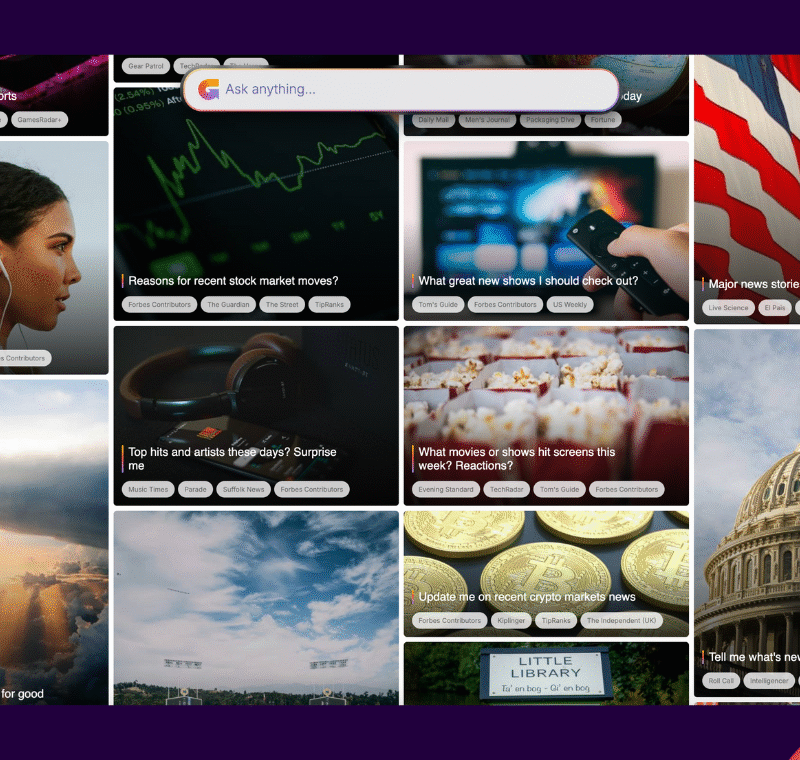Why it might be time to think again about print: Mr Magazine Samir Husni on the format’s remarkable resilience
After a small dip, which to be fair was caused largely by the pandemic, the number of new print magazines launched in the US rose once again in 2021, with 134 new titles exploring some very niche areas.
It is a trend that has been replicated in other countries across the globe as entrepreneurs, often enthused by a passion for their subject rather than acting on data-driven analysis of markets, create new print offerings.
At the same time we are also witnessing the growth of the bookazine – high end magazines that come with premium price tags yet are loved by enthusiasts and collectors.
One person who knows the magazine world very well is Mr Magazine, aka Samir Husni, who will be hosting a discussion on the future of the platform at this year’s Fipp Congress. Inspired by a lifelong passion for print, Samir has been researching and archiving magazines for decades while at the same time acting as a consultant to publishers and entrepreneurs who are curious to know what their future might be.
Here he offers an overview of current trends while reminding us once again that if we want to know the future a good place to start our search is the past.
Part of our: Meet the Speaker Series
Samir will be speaking at the 44th FIPP World Media Congress in June, and you can find out more here.
Tell us a bit about yourself – how did you fall in love with magazines?
It is hard to forget your first love. As a kid growing up in Tripoli, Lebanon I saw an ad on television about the launch of a new magazine called Superman coming to the marketplace. I saved enough money from my daily allowance to buy the first issue. As I was crossing the street from the shop to our apartment, something happened, maybe the ink on paper entered my blood through osmosis or something like that.
I immediately fell in love with the feel, the touch, the smell of the paper and the art of storytelling. For the first time I was able to read a story at my own pace, flip the pages, stop, continue, you name it. It was a whole new world for me and I knew at that moment in time that is what I want to do when I grow up: be a storyteller using magazines as my platform.
I was 10 back then and 59 years later I am still doing the same. Digging through magazines, reading the stories, consulting with the publishers, helping others launch magazines, and enjoying the only can’t hack platform that exists in this digital age. There’s nothing like flipping through the pages of a magazine, absolutely nothing.
And what does your day job mainly consist of?
After 37 years of teaching I retired from academia last August and am now devoting my time to consulting, researching, and writing about the magazine media. I have started an independent Magazine Media Center with the goal to preserve the past, present, and future of magazine media. I have a collection of more than 100,000 magazines including thousands of first issues that I am trying to find a home for.
Most of my day now is spent buried in piles of old magazines sorting, analysing, reading, and researching the jewels of times gone by. Comparing those magazines and discovering how they covered pandemics, wars, social life, lifestyles, you name it, is not like any other internet or digital search. These days I am spending a lot of time with magazines from 1937 to 1942 reading and reliving the beginning and end of World War II and how the magazine covered, or did not cover that war. To say history repeats itself would be an understatement.
We are starting to see a small rise in the number of print magazines globally. Why do you think this?
The advancements in the printing technologies have made it possible to print magazines with very short runs. You don’t need hundreds of thousands of copies to be welcomed at the printer anymore. The new technologies allow you to print 500 copies of a magazine at a reasonable price.
As long as we have people with ideas we are going to have new magazines. They say ideas come by the dozen, but I say it is the execution of the ideas that counts. And holding a magazine in your hands is the best example of a great execution of an idea.
In the United States after a dip in the number of new magazines introduced to the marketplace in 2020, the number rose again to 134 new titles in 2021 after seeing only 60 launches in the year before. Just a few new titles less than that of 139 in 2019.
“As long as we have people with ideas we are going to have new magazines.”
And looking into your crystal ball – where will the print magazine market be in five years’ time?
In order for me to look into my crystal ball, I have to look at my rear view mirror, for the past offers us hints of what the future holds. A century or more ago, after the pandemic of 1918 and after the end of World War I, a golden age of magazines was taking shape – led by entrepreneurs who had ideas for magazines and not business plans, ideas for magazines to the people, for the people, paid for by the people and not the advertisers.
DeWitt Wallace with his Reader’s Digest, a magazine without advertising, Henry Luce and Britton Hadden’s TIME magazine, a prototype with real copy and blank spaces for advertising (just the opposite of today’s prototypes with fancy ads and Greek copy for the articles), E.T. Meredith with his Better Homes and Gardens, Harold Ross and his The New Yorker, Samuel Roth and his Beau, David Smart and his Esquire, Hugh Hefner and his Playboy, Roy Reiman and his series of 12 titles from Country to Taste of Home with no advertising whatsoever (before they were to RDA)… just a few examples of folks with ideas who were not tangled in the corporate world of “paralysis analysis” of statistics and data. They had an idea and they followed up with it.
I am seeing a return to this trend today, and in the next few years, as we see more entrepreneurs who launching new magazines with new ideas such as V and V Man, Divorcing Well, Fleishigs, Bourbon+, Big Life, Stranger’s Guide, and Covey Rise, just to name a few magazines launched by entrepreneurs that one day, maybe one day in the future the names of the founders of these magazines will be in the history books as the aforementioned names are. There is hope, there is always hope and that is not a cliché, it is a reality.
And what type of magazines/niches do you think will thrive in the future?
Magazines are the best reflectors of society. They are the book of record when it comes to the history of pop culture. Any trend or even a fad taking place is a good fertile ground for a new magazine. From different diets, different music, to different lifestyles, there will be a magazine for that. There will always be room for a created-curated magazine that addresses the specific needs of an individual, no matter how specific those needs are. Anything you can dream off, or even have nightmares about, there will be a magazine out there to cover that. Just keep in mind, as one of my clients put on her desk, “Samir says, if you can find the answer on Google, it does not belong in the magazine.”
Where do you think the current trend for bookazines is likely to end up?
The short answer is, it will end up with more bookazines. Those titles are the “poor man’s coffee table books,” as one publisher once told me. They are curated products, printed on very high quality paper, offering a collector’s item at a hefty price aimed at folks who are interested in that very specific subject. As long as they continue to sell, publishers are going to continue to produce. They are and will continue to be a consumer-centric business model that will thrive as long as there are consumers. That, as a side, I say, as long as we have human beings we are going to have magazines. I just wish magazines would learn a lesson from bookazines and enhance the quality of their paper and printing. Print today can’t have the feel of a disposable item. It must carry the seeds of collectability within it.
Social media has been a powerful tool for marketing magazines? Do you think this will still be the case in the future given the challenges facing Facebook and others?
Here’s a good place to use one of my famous clichés: only two people can tell you the future, God and a fool. I know I am not God, so here it goes… Any platform you don’t own is like a sword with two edges. One day it is helping you a lot, promoting your magazine, connecting with your readers in many different ways, etc… but what happens if the owner of that platform pulls the plug on you? The future of magazines should depend and only depend on what is owned by the magazine, including but not limited to the digital platforms… I laugh when I see magazines saying they are going digital only when in reality they don’t own a single pixel on the digital platforms. At least in print, you own it and you have the proof to show it. So proceed with caution with social media and use as much as you to push folks to your print product…
How do you feel technology will aid print magazine publishers in the future? I am thinking AI, blockchain and even the Metaverse?
Smart publishers are already using technology to help them create the most relevant content for their magazines as it relates to the audience. A colleague of mine and I are working on a tool driven by AI (Cover Rocket) to analyse all magazine covers and provide actual data and ideas to help increase the value and sales of your magazine. We live in a digital smart age, and anyone who is not making use of all the technologies that are out there will be left behind. As long as you place the audience first or customer first you will have no problem. What worries me most is folks falling in love with the technology, or with the platforms, whether digital or print, and I always tell them, the only thing you need to fall in love with is your audience, your customer. Please don’t fall in love with the platform, it will not replicate your love…
And your fun question: Which digital-only title do you think missed a trick by not launching a print version?
Each and every digital title that did not launch a print version has missed more than one trick. Remember, I am the one that says, “if it is not ink on paper, it is not a magazine.” So if you want to be in the magazine business you better launch a print product, otherwise try to find another name for all the other lovely digital platforms that are out there. No one called television radio with pictures when it first appeared on the scene. They came up with a new name “television.” It is time for the industry and all those creative folks to come up with a name to all these digital products out there. How about “Telezines?”
? To see the latest speaker line-up for this June’s FIPP World Media Congress, along with details of the schedules, click here.
Header image: bibiphoto / Shutterstock.com












